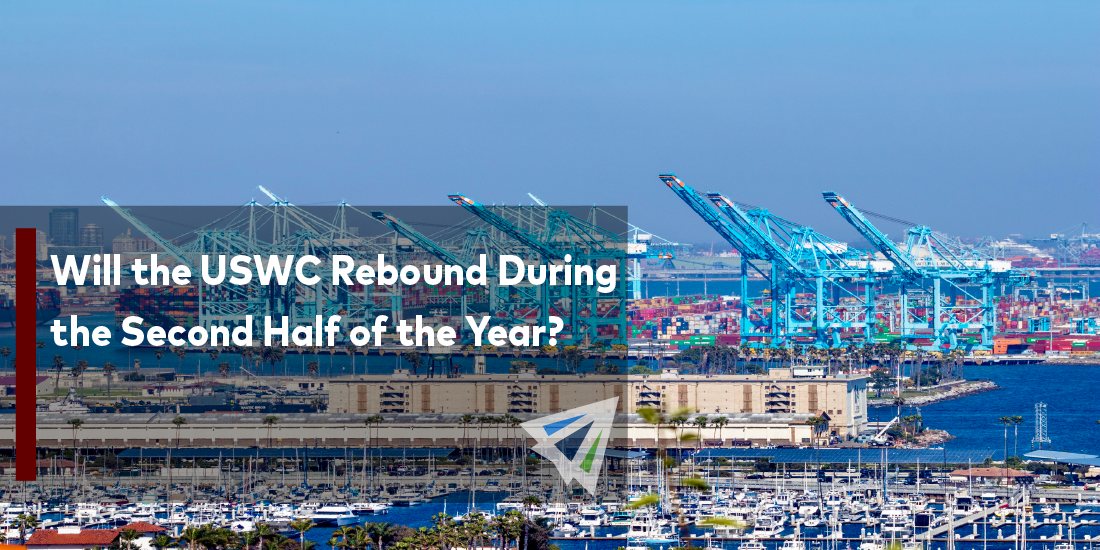Containerized imports increased from December but decreased from the prior year and levels prior to COVID in January 2023 at the Port of Los Angeles, and it’s looking the conditions may worsen before they improve. Gene Seroka, executive director of the Port of Los Angeles, forecasted during a recent news conference that the volume reduction will continue, with further sailings being canceled in the upcoming weeks and months. Also, he predicted that the market will be less volatile in the second quarter.
Seroka anticipates that volumes will increase in the second half as a result of a return to the more typical peak-season import pattern. He claimed that the second half of 2023 is going to be more robust.
Labor Deal Not Yet Reached
Imports are still being impacted by the West Coast port worker contract impasse, which expired on July 1, 2022, and is forcing cargo to East and Gulf Coast ports. Seroka admitted that some of the associated cargo might be permanently lost.
Seroka stated that there is still uncertainty and that many transportation managers are reluctant to tell their employer that their goods are stalled in California traffic for the third year in a row. He claimed that in order to address the criticism and rumors floating around, they needed to finish the labor agreement and move on.
A new West Coast port worker contract was expected to be announced in the months of February and March. During the press conference, he expressed less confidence in getting it done in February or March. However, some significant progress is expected to be made in the spring.
West vs. East Coast & Port Activity
726,014 twenty-foot equivalent units totaled throughput at the Port of Los Angeles, which was a 16% decrease from the previous year. Exports totaled 102,723 TEUs, up 3% from the previous year, while imports totaled 372,040 TEUs, which comes to a 13% year-over-year decline. 251,251 TEUs in total were empty containers, a 26% decrease from the previous year.
On a more positive notes, Imports into Los Angeles saw a small increase of 6% from December to January. It’s assumed this small increase in activity was brought on by cargo owners who pushed their goods here in advance of the Lunar New Year vacations.
Long Beach experienced a far sharper decline in imports than Los Angeles in January, falling 32% year over year compared to other U.S. ports. On the East Coast, January imports to Savannah decreased by 16% compared to the same month the previous year, while imports to Charleston, South Carolina, decreased by 7%.
In contrast, Long Beach performed better than Los Angeles in January compared to December, with imports increasing 9% sequentially. Savannah’s imports decreased by 3% in January while Charleston’s increased by 4%.
Comparisons to the time before the epidemic allow for the large gap between the East and West coasts to be noticed. While imports into Los Angeles and Long Beach decreased by 10% and 15%, respectively, from January 2020, imports into Savannah and Charleston increased by 12% and 20%, respectively.
The current labor concerns are not the only reason why people are moving from the West Coast to the East Coast. According to Seroka, the cargo shift has been in place for more than 20 years. The West Coast’s share of trans-Pacific trade has decreased from 80% to 56% since 2002. The percentage of import volume has decreased from 50% of the nation’s boxes to 33% right here in San Pedro Bay.
Owners and decision-makers of cargo have complained that the West Coast is overregulated, expensive, and has challenging labor concerns. As this is happening, the ports on the East and Gulf coasts have employed executives who work closely with lawmakers and collaborate with other states, with elected officials traveling to Washington, D.C., to get funding for infrastructure upgrades, which explains much of the discrepancy between ports on both halves of the U.S. It’s unsure exactly how activity will unfold in the coming months, but the spring is assumed to bring some much needed stability and predictability to the market in certain segments.
